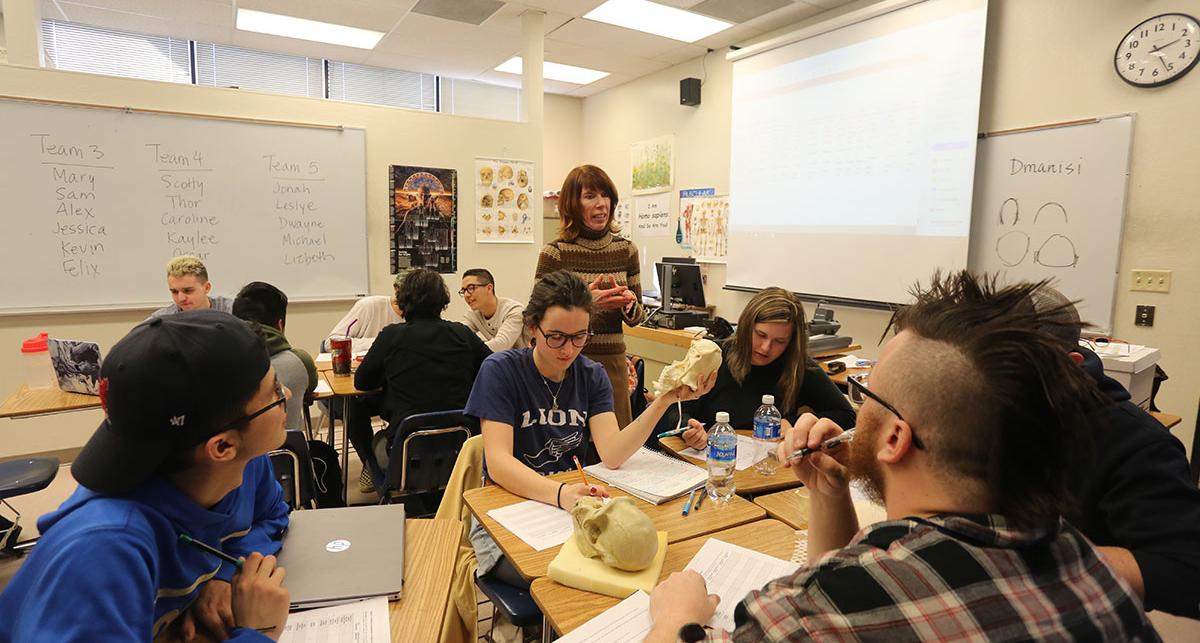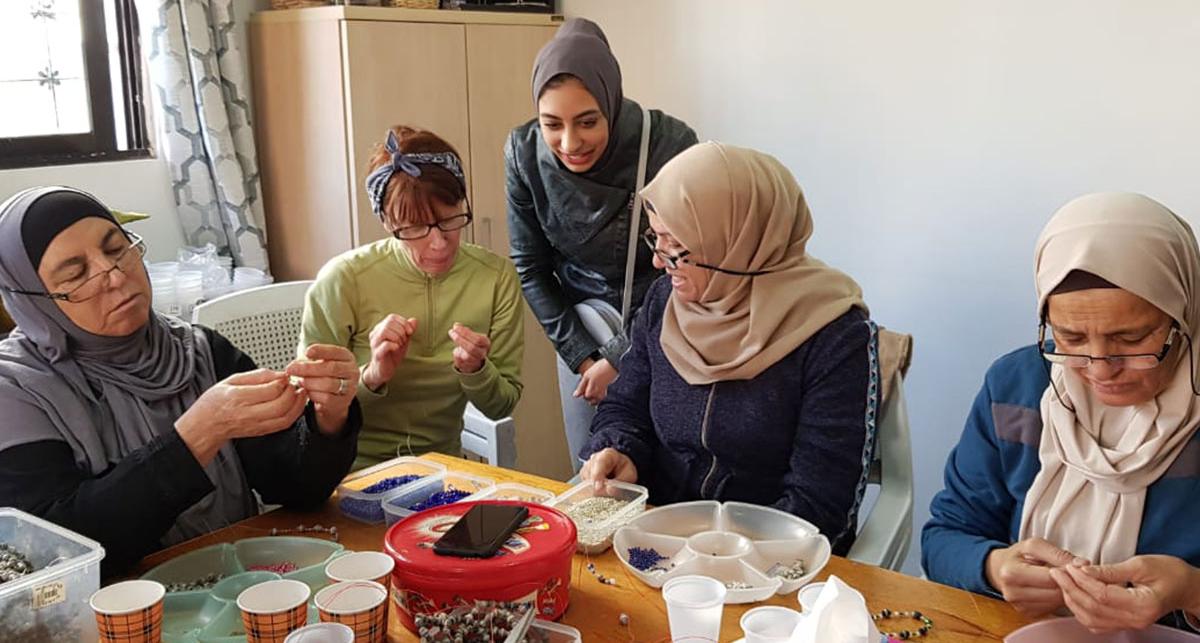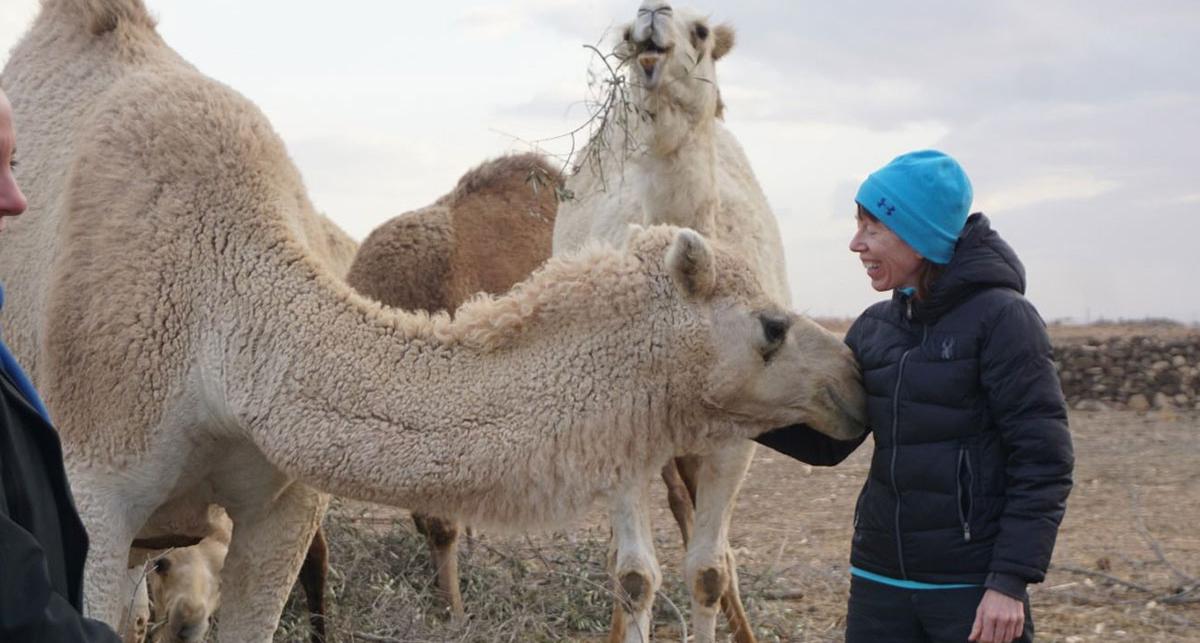
If you asked Anthropology Program Coordinator and Professor Joylin Namie what Nevada and the Islamic country Jordan have in common, you would be surprised by her answer. After participating in the 2020 Council of American Overseas Research Centers (CAORC) Faculty Development Seminar in Jordan, Namie has commented on sustainable tourism, and how those kinds of practices are often tied to an ethos—or the “spirit”—of a place.
First, Namie would tell you that both places get very little rainfall. Nevada, the driest state in the U.S. receives only 9.5 inches of rain a year, while Jordan receives a scant five. Yet, most of the water use in both places is for agriculture—and not for agriculture to grow food for people. Both places also have populations that are growing rapidly. In Nevada, this has been due to the economic growth in both the North and Southern parts of the state which is bringing in more residents from other places, whereas Jordan has had a large influx of refugees. “Things are just getting more expensive, and all this growth has placed a huge strain on the water system,” said Namie—she’s referring to Jordan, of course, but she could also be talking about Nevada, which can boast parched winters with very little snow. She cites a statistic from 2018 when several ski resorts made their own snow.
“One resort [in 2018] alone used 32 million gallons of water to open five trails. That same resort also purchased snowmaking equipment from Italy which allows them to make snow in 90-degree weather, so they can do action sport camps in the summer for skiers and snowboarders,” said Namie, who sees attitudes toward natural resources as an indicator of what societies value and why.
In fact, the ethos that is connected with the tourism industry in each place is vastly different, and excavating why and where these differences come from is the work of the contemporary cultural anthropologist. But even that, insists Namie, is as complicated as it is interesting.
The Meandering Path to Anthropology
While Namie has published widely in the arena of food studies, recently she has taken a foray into tourism. Given her impressive scholarship, it might be a surprise to learn that Namie didn’t begin her education with the intention of becoming an anthropologist. “I was an artist, a really good artist... I was doing fashion and medical illustration, and working full-time. Then, I decided that I wanted to teach,” she said.
Yet, as she approached the reality of what a fine arts degree would mean, i.e.: a career as a K-12 teacher, Namie had to make some changes in the trajectory of her professional career. She knew she wanted to teach at the college level, and she wanted to teach something meaningful and that could help students in the pursuit of their future careers. Coincidentally, this was also the semester when she had an opportunity to complete an independent study with a faculty member who studied art history and whose work intersected with anthropology through a particular project that involved mummies in New England. Namie became interested in the subject and took a few more anthropology classes.
“I thought this would be cool to teach... especially now when it’s really important for people to learn about others who aren’t like themselves, and learn how to make sense of the world. It’s like Ruth Benedict said back in the 1930s or 40s: ‘the purpose of anthropology is to make the world safe for human difference.’”
Namie decided to focus on anthropology as her academic and professional career. As an undergraduate student, she started completing research projects and working closely with faculty who studied topics in anthropology that she found interesting. When it was time for Namie to go to graduate school, she was admitted as a fully-funded graduate candidate to the University of California San Diego, which was one of the top ten programs in the field at that time, where she would earn her Ph.D.
Teaching... and Getting Students to Think Outside the Box
Individuals who pursue anthropology as a career typically don’t do so with the intent of focusing on teaching over scholarship. Namie, however, is unique in this respect. She went to graduate school with the end-goal of spending her time in classrooms, not in her office conducting research. “My favorite thing about graduate school was being a teaching assistant,” she said. “When I would go talk to my advisors, and they would ask me: ‘what do you want to do in anthropology?’ And I would answer that I wanted to teach. They just looked at me like I was crazy.”
Yet, Namie was being honest. The life she saw her advisors and professors living at UCSD was not the life she wanted. Namie remembers grading student papers with a friend until midnight on a Saturday at a local coffee shop and walking by the building on campus that housed the Anthropology department, and seeing the office windows of her advisors and professors still illuminated despite the late hour. And although the life of a community college professor also involves late nights dedicated to both research and evaluating student work, the emphasis falls on teaching which aligns with the kind of work Namie has always wanted to do.
“But I don’t recruit anthropology majors,” she insists. “There are going to be students who are interested in it, and I will help them succeed as best I can, but students need to understand from the beginning that they will have to get a bachelor’s and a master’s and a Ph.D. in order to do anything with the degree.”
The year Namie received her Ph.D., the American Anthropology Society conducted a study that revealed that sixty new open positions in the field opened that year— a small number when you consider 800 people had graduated with their Ph.D. and were entering the job market. To say it’s a competitive field is probably putting it lightly—yet, you don’t have to become an anthropologist in order to learn important lessons from this discipline.
“I had a student who was a physics major a few years ago, and he told me that he wanted to go to graduate school and pursue physics as a part of his profession,” said Namie. “He realized that he would probably be going to school and be working with people from other countries from around the world. And, there he was: a white American who’d never left Utah. He told me that he needed to learn the ways other people think. He took as many anthropology classes as he could as electives for his degree.”
Namie has also worked with students at TMCC on independent studies. “[I had a student who] was interested in nutrition and anthropology. So, we designed an anthropology and food class, and then we adjusted the course again to reflect what she was most interested in. [She] ended up traveling to do anthropology-based work in Albania, working with gypsy children and animals.” The point of independent study—and research—is that it requires students to look beyond their associate degree. It also requires students to think outside the box, or beyond the choices offered in the course catalog.
“Students need to think about the question: ‘what do you want to actually explore?’” said Namie. “I don’t know a lot of faculty who would say ‘no’ if a student showed up at their office and was like ‘I’m interested in what you do, is there some way I can get involved?’” According to Namie, asking that question is the first step in making your education the journey you want it to be, and to set yourself apart in a world that is only going to become increasingly competitive... especially in the social sciences.
What Does Jordan Have To Do With It?
In the Fall of 2019, Namie received a link in her email about a teaching fellowship with the Council of American Overseas Research Centers (CAORC). It was an opportunity for faculty who teach at community colleges or who teach at minority-serving institutions. The primary responsibility for participating faculty was to create course materials and content about Jordan or the Middle East in general. CAORC research centers exist in 22 locations all over the world, including Jordan.
“These opportunities don’t come up every year. The one in Jordan was about sustainability on the margins. Basically, it required me to spend time there, complete an extensive reading list, doing all the scheduled activities and incorporating that into the material I teach in my anthropology classes,” Namie said. “I already include a lot about tourism, local peoples and governments in my classes. Specifically, how those entities clash in sub-Saharan Africa with the wildlife preserves, and how pastoral and farming people are getting pushed out over fights over water, and fighting over whose animals gain access. In a way, it’s a lot of the same issues we face here in the west. This opportunity allowed me to look at tourism in Jordan, and tourism in Nevada to see how some of these same issues are playing out.”
The application process required her to write four 500-word essays—difficult not for their subject matter, but for their brevity. She was also required to write a blog about her CAORC experience 90 days after her return.
Namie insists this was not a vacation: her group was out the front doors of the lobby by 8 a.m. to start their 12-hour day of exploring various tourist sites—some well-known and others more obscure. She was also required to attend several lectures by well-known scholars and experts in sustainability, touring museums, experiencing micro-tourism like farm-to-table experiences and all that is required to get an in-depth look at a particular place and its culture. The back-to-back packed days offered nothing that looked like a vacation unless you count the day of the attack on Solumani occurred and Namie’s group was quarantined inside their facility. Even that day was not a day of rest. Instead, a guest speaker from the U.S. Embassy brought his lecture to them, and their work continued while under security lockdown.
Namie and other participating faculty were housed at the American Center for Oriential Research (ACOR), which is located in Jordan’s capital, Amman, a city that shares many challenges—as they relate to sustainability and consumption of natural resources—with cities in the western United States.
When describing the urban landscape of Amman, Namie recalls her attempt to go for a run on her second morning in Jordan. “I told myself I’d stay on the same road so I wouldn’t get lost,” she said. “But I was lost for two hours. Amman has just been allowed to spread, and there is all this sprawl of identical white four-story buildings,” she said. Luckily, Namie found her way back thanks to a cab driver who kindly took her where she needed to go for free, offering her a prayer when she arrived.
A few days later, she attended a lecture by a woman who works for the World Bank and who has completed several plans for cities around the world. “She compared Barcelona to Atlanta, Georgia,” Namie said. “These two cities have the same population, but a drastically different footprint. This is because [the growth and development] of Barcelona was planned, which has allowed the town to grow vertically. Their energy use was one-seventh of Atlanta’s—whose growth was allowed to simply sprawl. She’s trying to change the laws in Jordan that limit the number of floors from four to six, so you can build taller buildings.”
Namie also met an architect who’s trying to increase the amount of affordable housing while limiting the number of luxury apartments that go unoccupied because no one can afford the expense of living in them. Another lecture focused on the kinds of fruits and vegetables the country grows for export: tomatoes and watermelon. Strange choices, given that Jordan, like Nevada, has a rather dry climate. But then, we grow alfalfa, which also requires a considerable amount of water in a land of very little rain.
Reverence Versus Revelry
Sometimes a landmark becomes the symbol for an entire place, a placeholder in people’s mind that contains visual cues about the landscape, but also hints about the culture of the people who live there. This is especially true for places in which tourism is the primary industry. Chances are, if you’ve traveled anywhere in the world and you tell the people who ask where you’re from that you live in Nevada, they will probably respond with the statement: “Ah, Las Vegas.”
This is also true of Jordan, but instead of neon facades and “The Strip”, Jordan is renowned for its deep roots in human history that include several archeological sites, the most famous of which is Petra. Even if you’ve never traveled to the Middle East, you’ve probably seen Petra before.
The United Nations Educational, Scientific and Cultural Organization (UNESCO) World Heritage Site is also one of the Seven Wonders of the World; Petra is an ancient city that’s built into a narrow canyon with building facades cut into the rose-colored rock. The most famous of these is the Khazneh, or treasury building (which you may have seen on the film “Indiana Jones and the Last Crusade”) features an elaborate facade of various mythological figures which are slowly eroding due to time and weather.
“Jordan’s tourism sites are so fragile,” said Namie, who visited the site on a fairly chilly day in the off-season. “People were trying to do as little damage as possible. People tell you: ‘don’t touch the sandstone! Walk where you are supposed to!’ And, for the most part, people are following the directions even though millions of visitors come here every year.”
This is what gets Namie thinking about Las Vegas again—The Strip as yet another kind of civilization that opens its sidewalks to millions of tourists every year. For two places with basically the same function, it’s amazing how vastly different they feel... and how people act when they go there on vacation.
“You can’t tell if it’s day or night if you’re in a casino. There are no windows, there’s music constantly playing, there’s the glow of electric and neon lights. All of this sets up this liminal state where you’re ‘outside of everyday life.’ Granted, people take vacations to get outside of their own lives... but in that setting, it’s hard to tell people to manage their water usage or to use only one towel for the whole week. The culture of Las Vegas is defined by excess,” said Namie.
Yet, in Jordan, one is constantly aware of time and place. As Namie writes:
There is also the ubiquitous presence of Islam, as we were gently reminded of by calls to prayer throughout the day...[and] conservation of the archaeological heritage is of primary concern among the increasing numbers of visitors. The ethos here is one of respect over revelry. One is anchored in time and place, conscious of one’s every step, placing each foot carefully, praying that what is here, stays here.
While not everyone can be a cultural anthropologist, the study of how people exist in a particular time and place holds value even outside the classroom. Exploring the issues excavated by anthropology not only makes the world safe for human difference; instead, it also enables those differences to teach us all how to better preserve our past and future.
For more information about studying Anthropology at TMCC, contact the Social Sciences Department at 775-673-7185.





